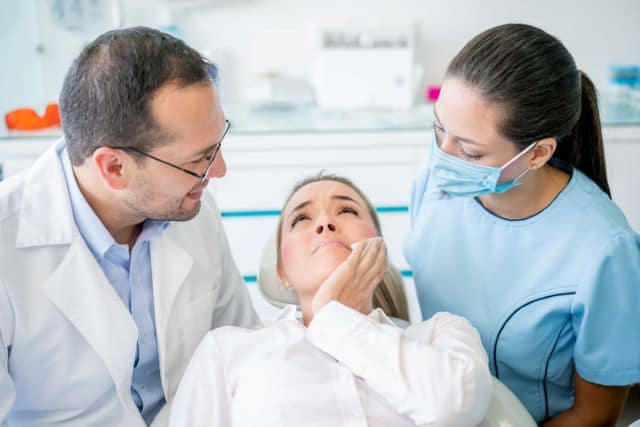
Image Source: Google
Dental emergencies can happen unexpectedly and knowing how to respond quickly can make a significant difference in the outcome. Here are five common dental emergencies and steps you can take to address them promptly. If you are looking for the emergency dental care then contact Total Dental Care.
Toothache
Symptoms:
- Sharp or throbbing pain in the tooth
- Sensitivity to hot or cold
- Swelling around the tooth or gums
Response:
If you experience a toothache, rinse your mouth with warm water and floss to ensure there is no food debris causing the pain. You can take over-the-counter pain medication and apply a cold compress to reduce swelling. Contact your dentist to schedule an appointment as soon as possible.
Chipped or Broken Tooth
Symptoms:
- Pain when biting or chewing
- Rough or sharp edges on the tooth
- Bleeding from the tooth or gums
Response:
If you chip or break a tooth, rinse your mouth with warm water to clean the area. Save any broken tooth fragments if possible. Use a cold compress on the outside of your mouth to reduce pain and swelling. Contact your dentist immediately for evaluation and treatment.
Image Source: Google
Knocked-Out Tooth
Symptoms:
- Sudden loss of a tooth
- Bleeding from the socket
- Pain and swelling in the area
Response:
If a tooth gets knocked out, hold it by the crown (top part) and rinse it gently with water if it’s dirty. Try to place the tooth back in its socket without touching the roots if possible. If that’s not feasible, store the tooth in a container of milk or saliva and seek emergency dental care immediately. Time is crucial in saving a knocked-out tooth.
Lost Filling or Crown
Symptoms:
- Sudden change in tooth sensitivity
- Visible hole or missing restoration
- Discomfort when biting or chewing
Response:
If you lose a filling or crown, try to keep the affected area clean by rinsing with warm water. You can use over-the-counter dental cement or sugar-free gum to cover the exposed tooth surface temporarily. Avoid chewing on the affected side and see your dentist promptly to have the filling or crown replaced.
Abscessed Tooth
Symptoms:
- Severe, persistent toothache
- Swelling in the face or cheek
- Pimple-like bump on the gums
Response:
An abscessed tooth is a serious dental emergency that requires immediate attention. Rinse your mouth with saltwater to alleviate discomfort and draw out pus. Contact your dentist or visit an emergency dental clinic as soon as possible. Untreated abscesses can lead to serious complications.
Being prepared for dental emergencies can help you respond quickly and effectively when they occur. Remember to contact your dentist for guidance and treatment in any dental emergency situation. Stay informed, stay calm, and take proactive steps to protect your oral health.


